Post-Tension Cables

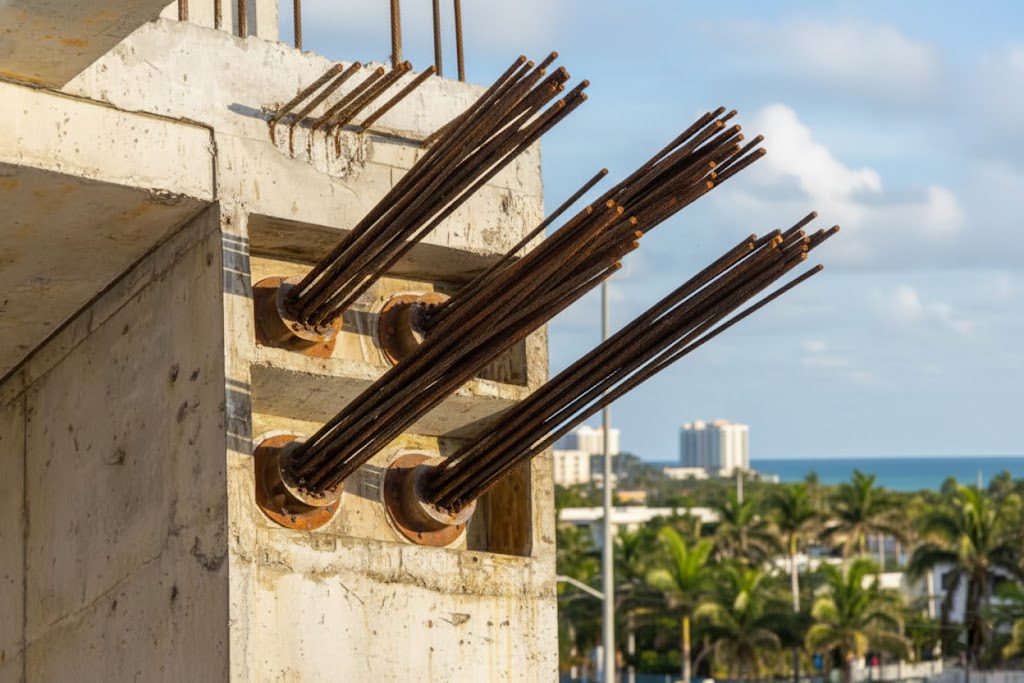
Modern Concrete Strength
Post-Tensioning (P-T) cables are a vital component in modern structural engineering. They significantly increase the strength and durability of concrete elements, enabling engineers to achieve longer, more efficient structural spans, thinner slabs, and more adaptable architectural designs than traditional reinforced concrete permits.
As specialists in concrete restoration and construction, Mark One Contractors utilizes post-tensioning to enhance the longevity and performance of both new and existing structures across South Florida.
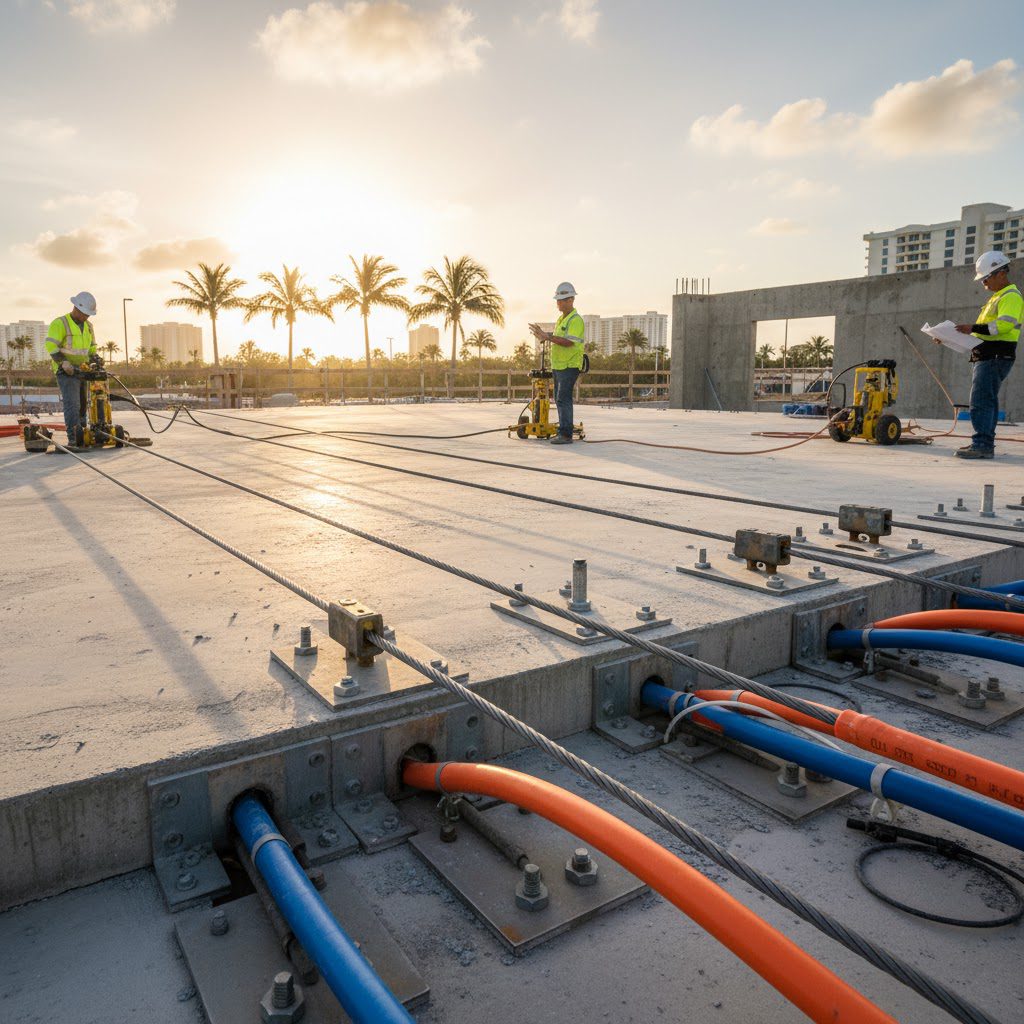
How Post-Tensioning Works
Post-tensioning cables are high-strength steel strands used to actively reinforce concrete. This process differs fundamentally from the passive reinforcement provided by rebar.
Placement
Steel cables are placed inside protective ducts or sheaths within the concrete formwork before the pour.
Anchoring
Using specialized hydraulic jacks, the cables are stretched (tensioned) to a specific force.
Curing
The concrete is poured around the sheaths and allowed to cure until it reaches the necessary strength (typically 70-80% of its final design strength).
Structural Reinforcement
Once the required tension is achieved, the cables are permanently secured, or anchored, against the concrete structure.
External Systems
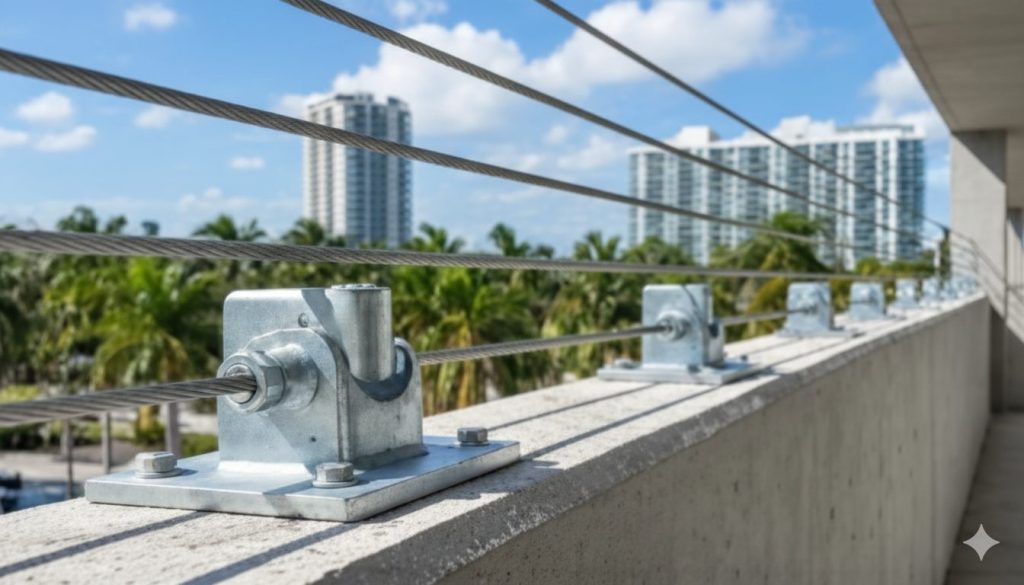
Installed post-construction with specialized anchor systems and structural brackets. Perfect for adding capacity or repairing existing, difficult-to-access concrete elements.
Applications:
– Retrofit / Existing Structures
– New Structures (Selected designs)
Advantages:
– Architecturally Enhanced Appearance
– Adaptable to As-Built Conditions
Internal / Embedded Systems
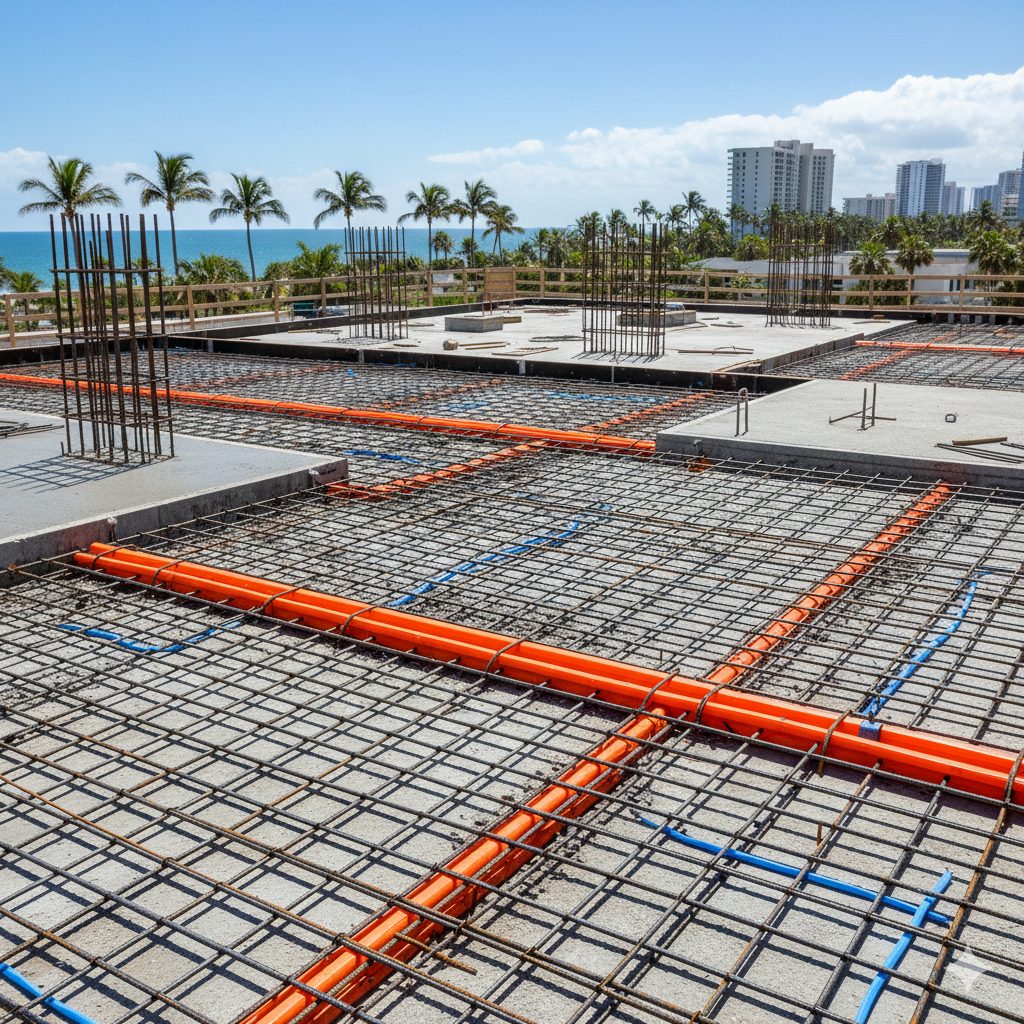
Our most common application uses embedded anchors and sleeves installed during concrete construction. This maximizes slab spans and structural efficiency.
Applications:
– New Structures
– Infrastructure Projects
Advantages:
– Ease of Installation & Quality Control
– Highly Economical for New Builds
No Stressing Access Systems
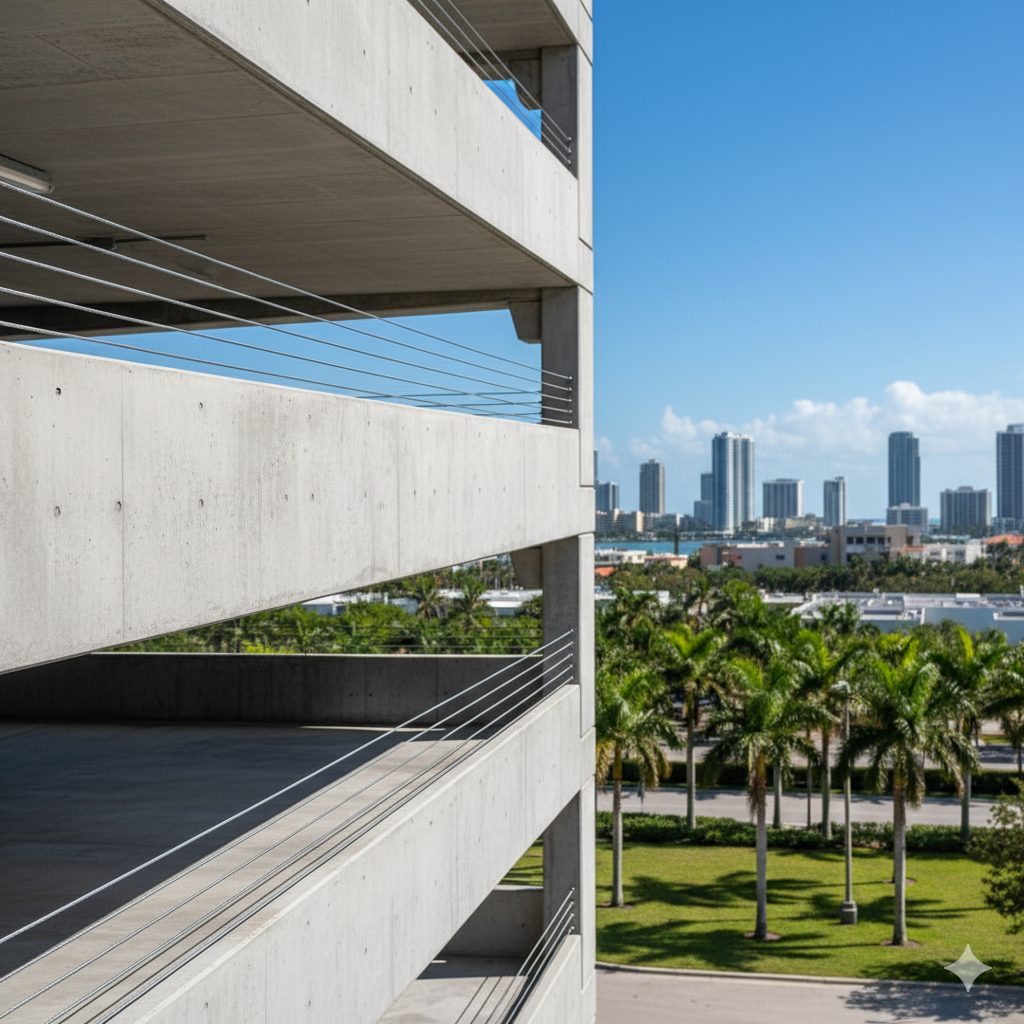
Specialized barrier cable anchorages are utilized when adequate access for stressing systems is limited, typically for shear wall locations or complex repair conditions.
Applications:
– New Structures (Complex Designs)
– Retrofit / Existing Structures (Limited Access)
Advantages:
– Minimal Visual Impact (Aesthetics)
– No Backseating Force Concerns
Core Restoration & P-T Repair Services
Structural Inspection & Diagnosis
We use non-destructive testing (NDT) and laboratory analysis to locate and map post-tension cables, detect tendon failures, and measure corrosion levels in anchors and steel tendons. Our goal: to deliver a clear, data-backed structural report and a precise repair plan for safe, cost-effective restoration.
Post-Tension Cable Repair
Our team performs expert repairs and replacements of damaged post-tension cables and corroded anchors using certified splicing and anchoring systems.
Every intervention is designed to restore the concrete’s original compressive strength and load capacity, ensuring long-term structural performance.
Corrosion Mitigation & Protection
Stopping deterioration before it spreads.
We apply next-generation grease compounds, sealants, and protective coatings to exposed anchors and tensioning systems — engineered to resist Florida’s harsh coastal environment.
This process prevents future corrosion, extends the service life of the structure, and reduces costly maintenance over time.
Post-Tensioning vs. Pre-Tensioning
- After the concrete has cured (on-site).
- Before the concrete is poured.
- Tendons are tensioned, then concrete is poured around them; the compressive force is transferred when the tension is released.
- Precast concrete products manufactured off-site (e.g., small beams, railway sleepers).
Ready to Start Your Project with MarkOne Contractors?
We’re building more than just structures; we’re building relationships.
